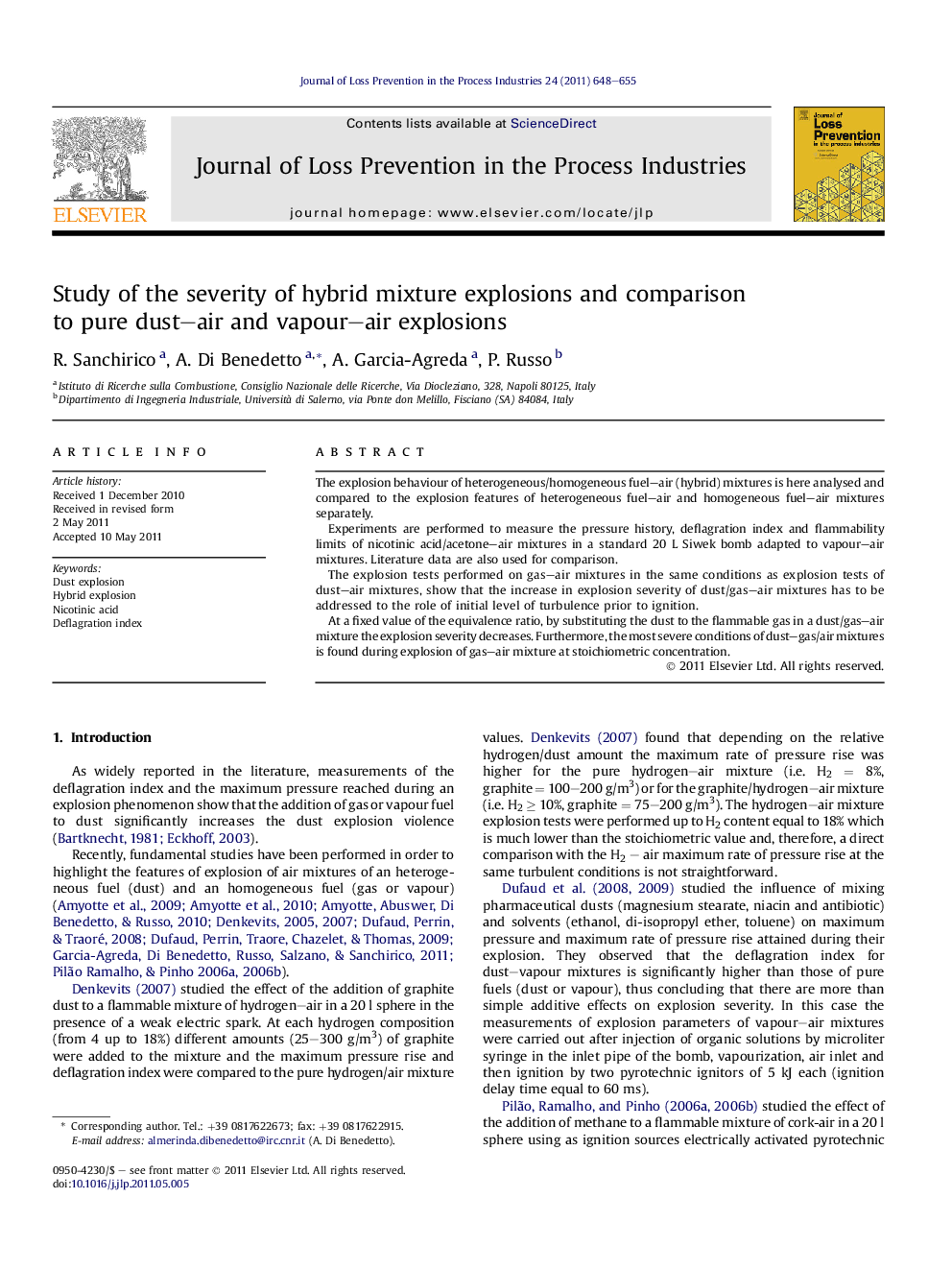| Article ID | Journal | Published Year | Pages | File Type |
|---|---|---|---|---|
| 587060 | Journal of Loss Prevention in the Process Industries | 2011 | 8 Pages |
The explosion behaviour of heterogeneous/homogeneous fuel–air (hybrid) mixtures is here analysed and compared to the explosion features of heterogeneous fuel–air and homogeneous fuel–air mixtures separately.Experiments are performed to measure the pressure history, deflagration index and flammability limits of nicotinic acid/acetone–air mixtures in a standard 20 L Siwek bomb adapted to vapour–air mixtures. Literature data are also used for comparison.The explosion tests performed on gas–air mixtures in the same conditions as explosion tests of dust–air mixtures, show that the increase in explosion severity of dust/gas–air mixtures has to be addressed to the role of initial level of turbulence prior to ignition.At a fixed value of the equivalence ratio, by substituting the dust to the flammable gas in a dust/gas–air mixture the explosion severity decreases. Furthermore, the most severe conditions of dust–gas/air mixtures is found during explosion of gas–air mixture at stoichiometric concentration.
Graphical abstractFigure optionsDownload full-size imageDownload as PowerPoint slideHighlights► At fixed equivalence ratio explosion severity decreases substituting vapour with dust. ► Explosion severity of hybrid mixture is lower than that of stoichiometric vapour in air. ► For protection systems design, severity of vapour at stoichiometric concentration has to be used.
